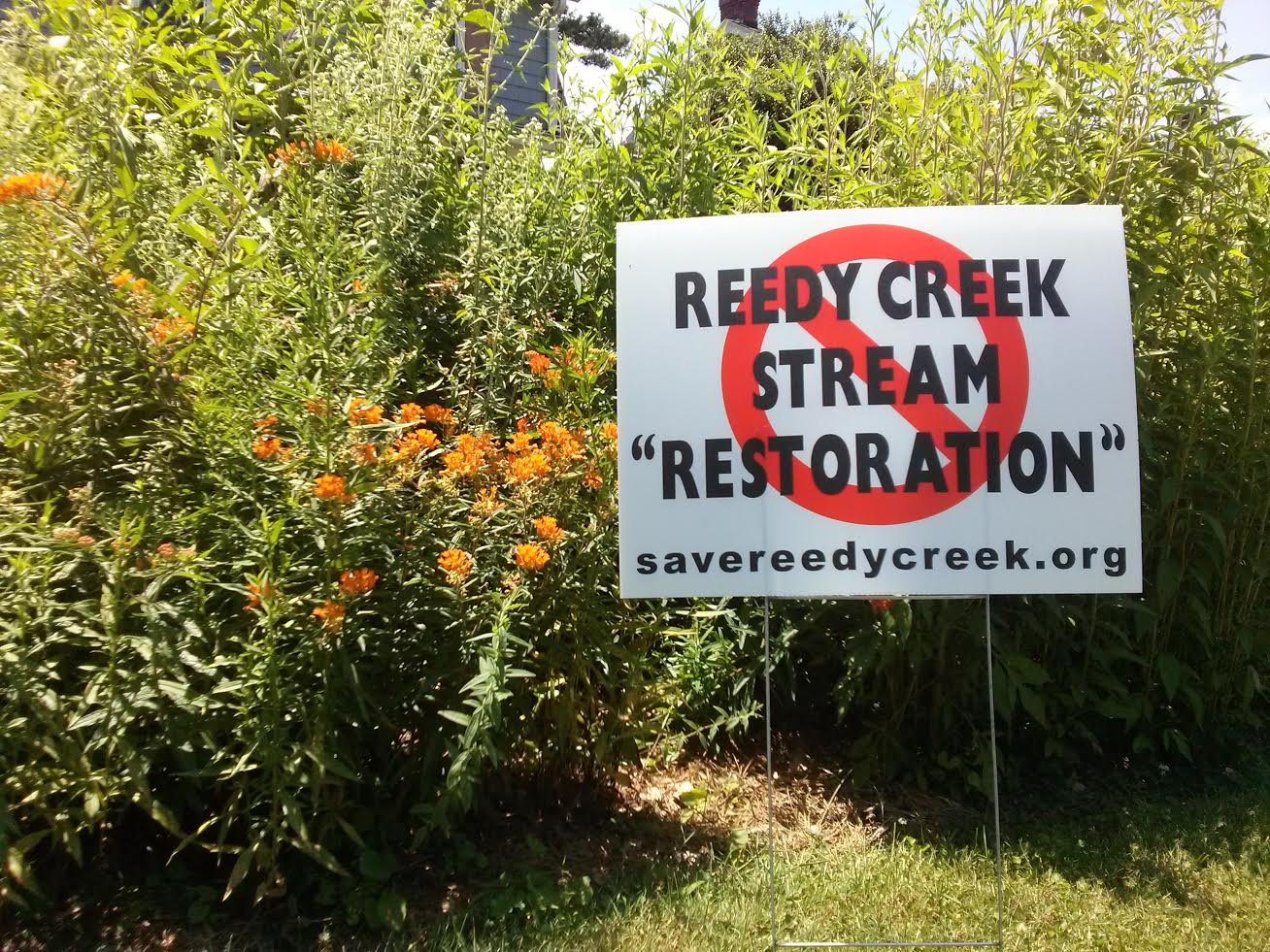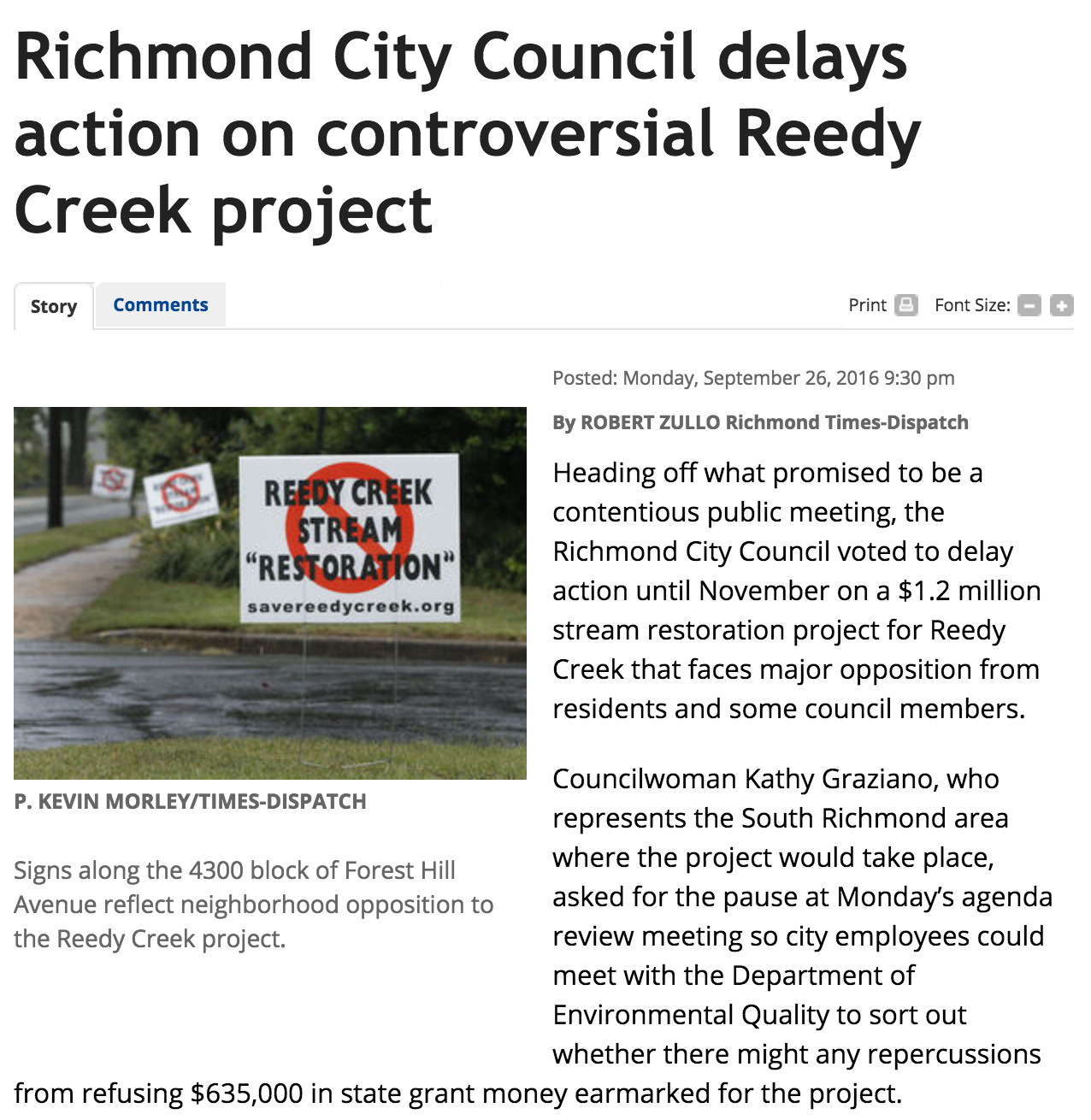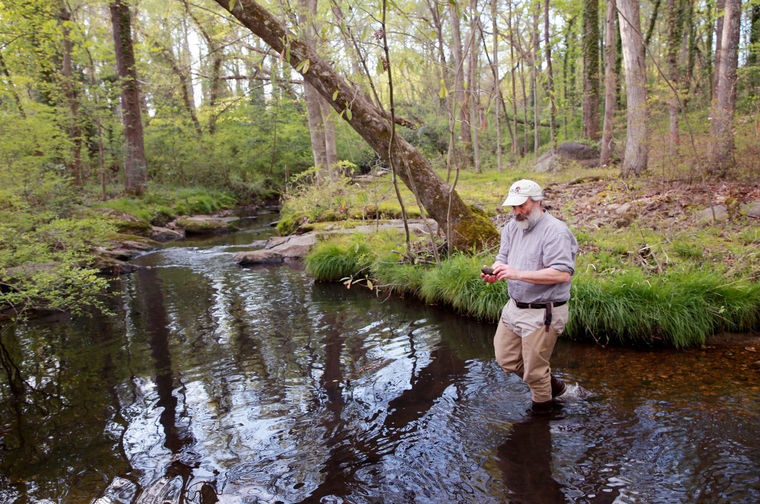As we drove longer the signs became more and more frequent. If one was to plot out the location of each sign on a map, you could clearly see where we were headed. Right in the middle of the map, with the most signs of all, was Reedy Creek.
Of all the trips we have taken, I think this one really used what we have learned about geography and watersheds and applied it to the real world. As Bill Shanabruch passionately rambled on, I realized he was talking about everything we discussed in class naturally. He talked about riparian buffers, hard stream banks, erosion and more. By the end of his talk I was sure he was going to tell us the hydrologic unit code for Reedy Creek, because he touched on everything else have discussed. Throughout this course I have sometimes felt lost about what we were learning, but on this trip it all clicked together and made sense.
Using the concepts of scale and connectivity, Bill Shanabruch explained to us all the negative impacts the proposed restoration will have. He said how this project will not actually solve the problem. The issue comes at a larger scale of high volume of storm water runoff. It doesn’t make sense to treat the symptoms when you could just fix the source. Not only will this project have not one positive impact, but it will most definitely negatively impact the stream. Thousands of trees will be cut down, 1.3 million tax payer dollars will be wasted and possible archeological sites will be disturbed. The construction also proposes the creation of a concrete channel, of which we have learned all the horrors of removing natural banks in our class readings which are outlined in my previous synthetic post. For me, this Reedy Creek “Restoration” seems to be nothing more than a government project to just “check off the box” and say they did something beneficial, without actually looking into the details.
As Quinn explains in her blog, “creating community matters” for just about everything in life. It is the community that got together and formed the Reedy Creek Coalition to take a better look at this project. It is the neighborhood community that is uniting to take better care of their own backyard. We are a living learning community, all students from different backgrounds who are united by this class we take together. I hope that we will be more like Bill Shanabruch, and use what we have all learned together to help a real world issue.



